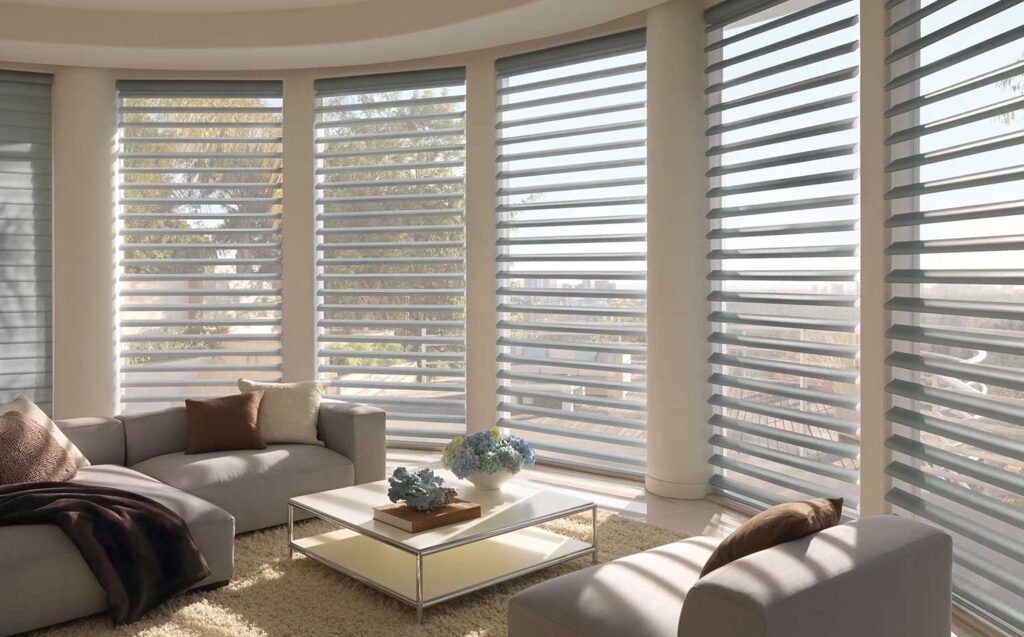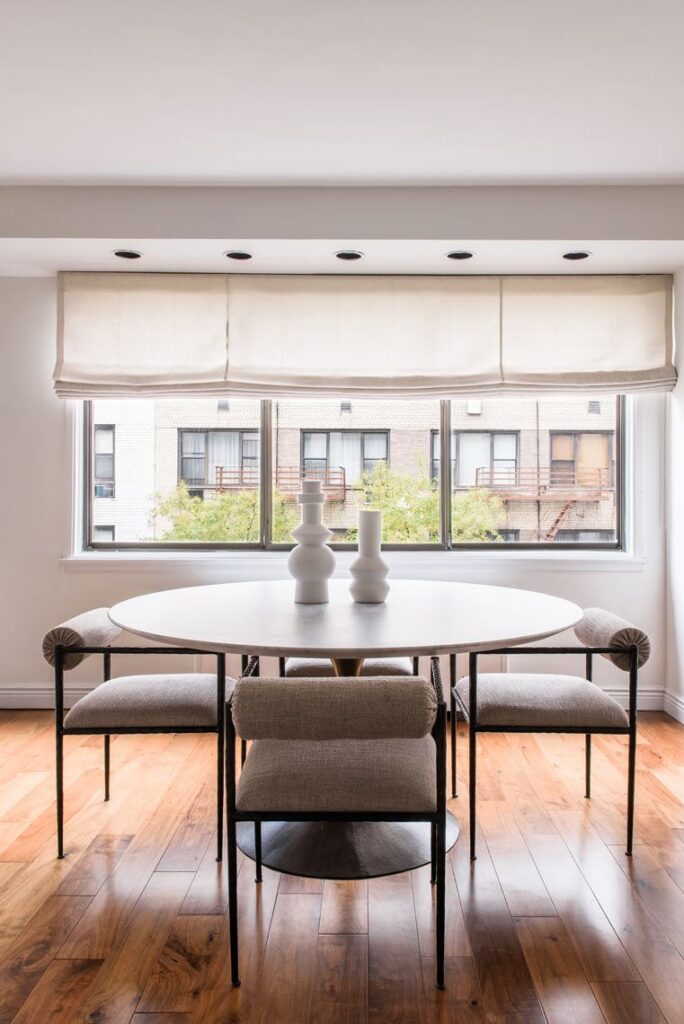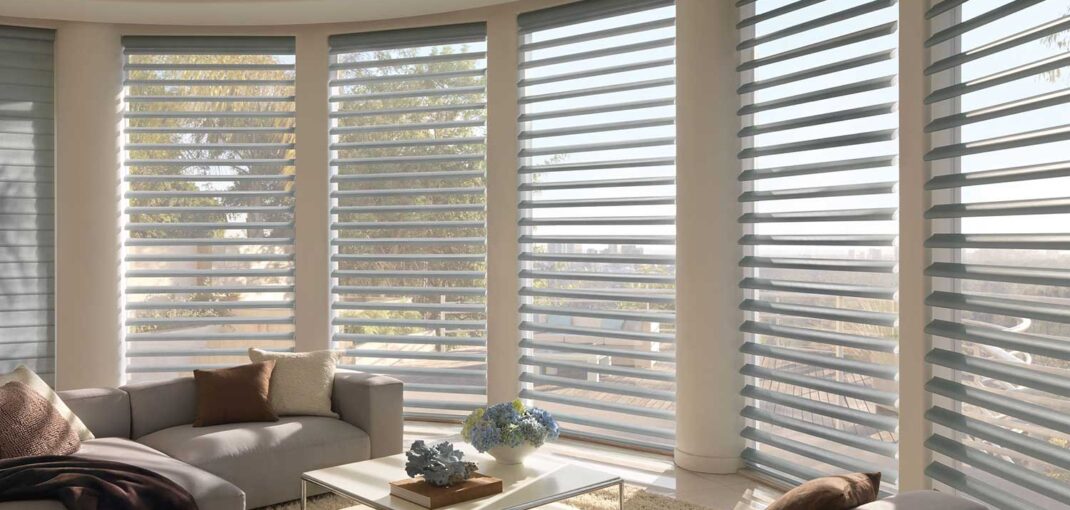Whether you’re moving into a new home or redecorating your apartment, different types of window treatments can significantly impact your interior design. Window treatments come in a variety of styles that can change the look and feel of a room. As a result, we’ve created a comprehensive resource on the subject that divides the many types of window coverings into three main categories and covers all you need to know about them.

1. HARD WINDOW TREATMENTS
Hard window treatments are made of durable materials such as wood or vinyl. Shades, blinds, and shutters, for example
Shutters
Vertical slats of wood or polyresin make-up window shutters. Using a hinge, it is attached to the window frame. They can be either stationary or tilted, unable to move up or down. On the other hand, their slats can be opened or closed to regulate the amount of light that enters the space. Internal and outdoor window spaces can both benefit from window shutters.
There are two types of window shutters: wood shutters and polyresin shutters, based on the material used in their construction.
Shades
There are no slats or vanes on window shades, and they come in a range of materials. Shades composed of light-filtering cloth that blocks UV rays and woven wood shades made of bamboo are also available. Smooth or pleated shades are available. The most prevalent are Roman, roller, balloon, solar, honeycomb cellular, blackout, and sheer shades, roller, and blackout shades. Motorized or manual shades are available, and they can be customized to fit any window.
Blinds
Louvers in window blinds allow light to pass through the room when they are opened. It is possible to open it without having to remove the shades. Blinds block people’s views of the room. Aluminum blinds, hardwood blinds, and faux wood blinds are just a few of the different types of blinds available. Anti-dust blinds are also available these days. Venetian blinds, pleated blinds, and vertical blinds are some examples of blinds based on design.
2. SOFT WINDOW TREATMENTS
Soft window treatments include sheers, curtains, drapes, swags, and valances.
CURTAINS
They are one of the most widely used window treatments. Curtain panels are normally sold in pairs and are suspended on curtain rods. They come in a lot of sizes, materials, thicknesses, patterns, colors, and designs and can be used to enhance the color and texture of your home. The best curtains for your needs will be determined by their purpose. Sheer cloth curtains, for example, will not provide privacy or block out sunlight. Curtains are often known as drapes, but there are some differences between them. Drapes are heavier than curtains and provide more privacy. Double-lined drapes are frequently used to block light. Drapes are more formal than curtains, and they are more effective at deflecting cold and hot air.
VALANCES
Valances are lovely toppers that conceal the hardware on your draperies, drapes, blinds, or shades. These beautiful cloth tops are draped around the top of the window frame. Some of the styles available are pleated, arched, and flat.
3. COMBINED WINDOW TREATMENTS
These are window treatments that are combined. There are many reasons why window combination treatments are important: they add style, elegance, and efficiency. It also has multiple functions like light control, temperature, etc.
While a single-window treatment may be appealing, stacking treatments can add depth and visual appeal. For example, curtains could be added to soften the effect of a window with blinds. A valance can add a dash of color or a one-of-a-kind design that you wouldn’t be able to achieve with just one shade.

CONCLUSION
Every window covering performs the same objective, albeit in varying degrees and ways. To choose the best one for your home, you must first understand how they work. You can use a different window coverings in each room, or mix and match them for a crazy appearance and effect.

